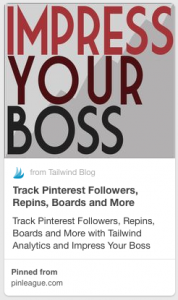 I’m probably asked this question more than any other when I speak to clients at my regular email marketing workshops. While there is an easy answer to this, it’s not often what clients want to hear.
I’m probably asked this question more than any other when I speak to clients at my regular email marketing workshops. While there is an easy answer to this, it’s not often what clients want to hear.
I believe the best time to send your email marketing newsletter is when you have something relevant, engaging and timely to say. Conversely, if you have nothing to say, it’s probably best to say nothing at all.
The time of your send should also be governed by your clients’ expectations and not your business’s. This might mean making some changes in the way you operate your business by having resources available to meet demand when your emails hit your subscribers’ inboxes.
Time for Change
It has long been a personal mission of mine to break my clients’ habit of sending fixed-time, standalone, monthly campaigns (usually sent on the second Tuesday of the month at 11am) and focus on more targeted and useful sends.
A fixed-time, standalone, monthly send is not a strategy – it’s an afterthought, and there are a number of reasons why this will not yield optimum results:
- Content Quality: A rigid deadline can have detrimental impact on the quality of your email copy. How many marketers must be scrambling around the workplace on the second Monday of the month trying to find useful content to meet their self-imposed deadlines? The moment you send dull, uninspiring, untargeted content to an untargeted audience is the moment you start to lose engagement with your list.
- Lost Opportunities: In a competitive market, sitting on great content or delaying a send to fit in with your monthly publishing schedule opens the door to your competition to steal your thunder. If you have access to a great product, have an insightful piece of industry-related thought leadership or just a great story to tell, tell the world about it NOW!
- Boom and Bust: By sending a fixed-time, standalone, monthly email, you stand the risk of creating unmanageable peaks and troughs in your business operations. This could put undue pressure on your sales, logistics and customer support efforts. If your business is unable to cope with demand (especially during peak times like the holidays), it might be worth re-scheduling or pausing certain campaigns until you are in a better position to deliver the kind of service your clients expect. Similarly, nobody likes paying staff to stand around waiting for the next campaign to drive demand. Wouldn’t it be better to spread the load over the month with a series of targeted sends?
Know Your Subscribers
Of course, to determine the best time to send an email, you need to know when your subscribers are most likely to be engaged by your campaigns and how each campaign will benefit your business.
For example:
A business targeting young parents might find an evening send (after the kids have gone to bed) more successful than during a busy day consumed by school runs, work and the million other chores revolving around family life.
A busy restaurant may find an early week, mid-morning send more useful in filling tables during quieter lunch times than a campaign that attracts business they cannot accommodate at peak times.
Testing Times
It may be possible to predict the best time to send your newsletter simply by analyzing the peak times people visit your website, but the only way to truly optimize success is by testing.
Try sending your newsletter to a subset of your list at different times of the day to find out when your list is most engaged. If your business operates over different time zones, you may find your campaigns deliver greater success if you are able to segment your list by geography.
Mobile Opportunities
The optimum time to send your email newsletter might surprise you. Because email is no longer tethered to desktop devices (more than 65% of emails are now opened on mobile devices), your opportunity to engage your clients outside of the “traditional” working day is now very real. Your subscribers carry their email inbox around with them everywhere and engage with it constantly. This emphasizes the fact that if you wish to optimize your email marketing efforts, you need to ensure every aspect of your online presence is mobile friendly. A mobile responsive email campaign will not yield the kind of results you were hoping for if your website is not mobile ready.
Have you found success by changing the time you send emails? Share your comments below:
This post first appeared on the iContact Email Marketing Blog.
Image: Sean MacEntee
Digital & Social Articles on Business 2 Community(131)
Report Post





